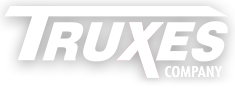Each day we are bombarded with advertisements, billboards and signs of all kinds. It’s no wonder that a lot of these signs are taken for granted or even go unnoticed. However, many laws and regulations require very specific and recognizable signage in the workplace or public areas for the safety of everyone.
If you are a business owner then you are probably already aware of some of the requirements you must meet and signage you must display around the workplace. Several laws and agencies are in place to regulate these requirements and have very specific guidelines that must be followed.
ADA, or the Americans with Disabilities Act, was created to protect the rights and prevent discrimination against disabled Americans. The ADA sets requirements to ensure fair employment opportunities, access to government services, public accommodations, commercial facilities, transportation and much more.
As part of the Americans with Disabilities Act, businesses must display ADA signage that meets specific guidelines to be considered compliant. Signs must be set on a reflective background, they must use raised lettering, and also meet specific height requirements. All of this is done to ensure that the signs are easily readable and understandable. Some ADA signs you may recognize are a “Wheelchair Accessible” sign or “Use Stairs In Case of Fire” sign.
ADA also specifies that braille be used in some cases for the visually impaired. This includes signage in elevators, stairwells and by exits. Again specific height specifications are in place to ensure that they can be properly read by someone who is visually impaired. Braille characters are also commonly used on hotel, resort and hospital signage. These signs may identify specific locations at these places such as “Hotel Lobby,” “Resort Concierge” and “Emergency Room Entrance” or may simply be used on room number signage.
Other signage in the workplace includes signs regulated by the Occupational Safety & Health Administration or OSHA. These signs are in place to protect the safety of all workers. Some of these may be more specific to your actual occupation but include warnings like “Danger” or “Caution” signs – or identify a freight elevator and its capacity. Other types of safety signage used to protect patrons include escalator signage in department stores, “Emergency Room Entrance” signs at hospitals or “No Smoking” signs in hotels. Still other types of signage are displayed for patron convenience rather than safety such as “Hospital Cafeteria” signage, “Concierge” hotel signage and “Health Club” resort signage. While not typical OSHA signage, these types of signs still play a vital role in keeping people informed and safer during their visit.
As you can see signage is a very important and a government regulated part of the workplace. It is best to talk to a professional who understands the laws and can assist you with all the requirements. Make sure you purchase your signs from a company who also knows and understands ADA and OSHA laws.
Signage has become so commonplace that it is often overlooked. Next time you pass a sign informing you of the fire exits or stairwells, or letting you know that your favorite restaurant is handicapped accessible remember that these are there for your safety and the safety of everyone.

